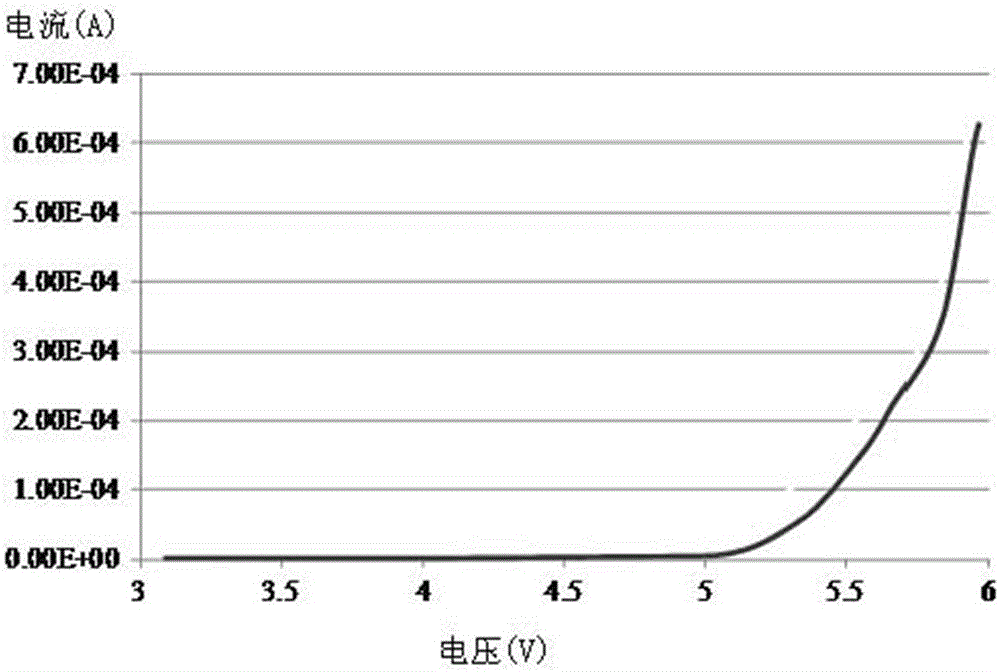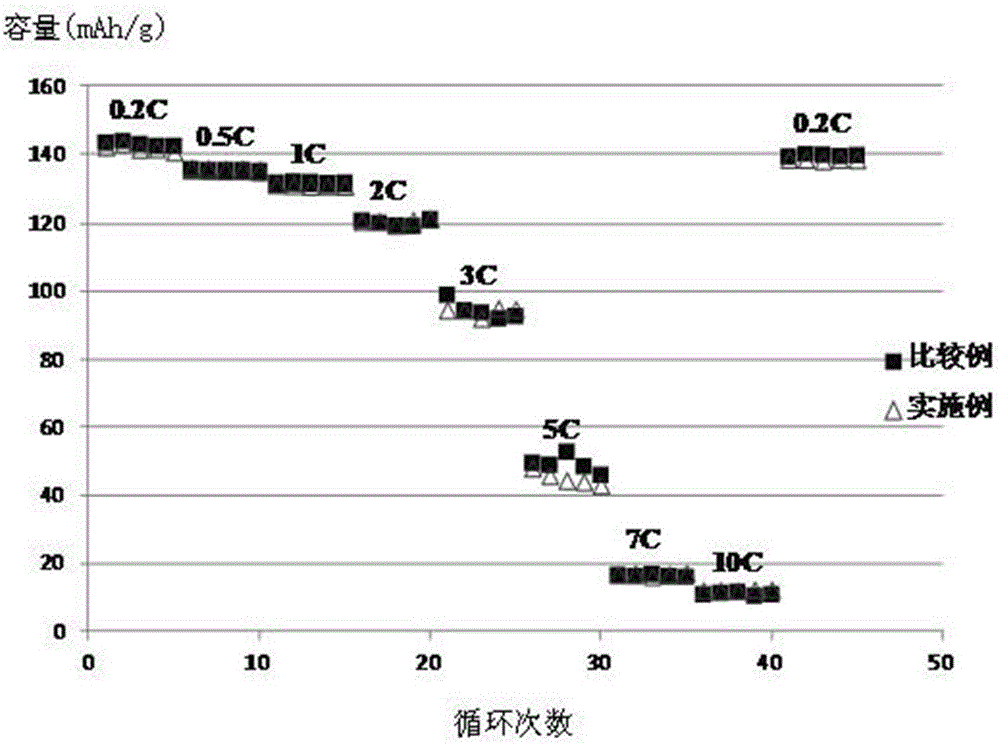An electrolyte additive and electrolyte and lithium ion battery containing the additive
An electrolyte additive and electrolyte technology, applied in the field of lithium ion batteries and electrolytes, to achieve the effect of improving high-voltage cycle performance and capacity retention rate, and increasing the scope of application
- Summary
- Abstract
- Description
- Claims
- Application Information
AI Technical Summary
Problems solved by technology
Method used
Image
Examples
Embodiment
[0034] Take 1.0mol / L LiPF 6 Soluble in ethylene carbonate (EC), diethyl carbonate (DEC), ethyl methyl carbonate (EMC) mixed solvent (volume ratio EC / DEC / EMC=1 / 1 / 1), add 1% (mass percentage) of , fully stirred to make it uniform, and degassed to obtain an electrolyte, which was injected into the positive electrode material (LiCoO 2 ), a negative electrode material (Li) and a separator composed of a lithium-ion battery.
[0035] see figure 1 , figure 1 is the linear potential scanning curve of the electrolyte in the present embodiment obtained by the linear potential scanning method, from figure 1It can be seen that the electrochemical window of the electrolyte in this implementation can reach about 5V, which is larger than that of the current conventional electrolyte, that is, about 4.5V.
[0036] Please also refer to figure 2 , figure 2 It is a charge-discharge cycle comparison chart of an electrolyte battery without additives as a comparative example and an electroly...
PUM
 Login to View More
Login to View More Abstract
Description
Claims
Application Information
 Login to View More
Login to View More - R&D
- Intellectual Property
- Life Sciences
- Materials
- Tech Scout
- Unparalleled Data Quality
- Higher Quality Content
- 60% Fewer Hallucinations
Browse by: Latest US Patents, China's latest patents, Technical Efficacy Thesaurus, Application Domain, Technology Topic, Popular Technical Reports.
© 2025 PatSnap. All rights reserved.Legal|Privacy policy|Modern Slavery Act Transparency Statement|Sitemap|About US| Contact US: help@patsnap.com



